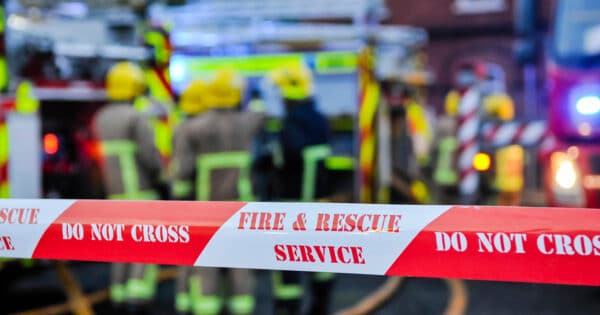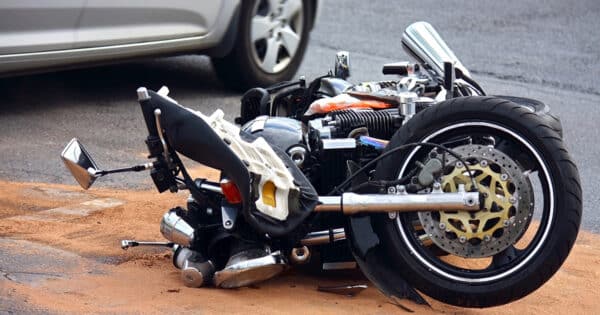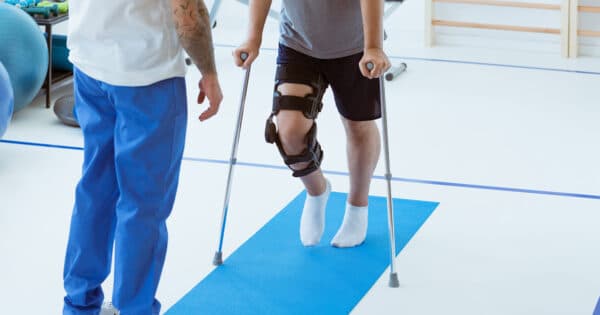We have acted for several victims of the Croydon tram accident in November 2016. The tram was carrying 69 passengers when it derailed and overturned on a curve as it approached Sandilands Junction.
The tram had reached the maximum permitted speed of 50 mph as it entered the first of three closely spaced tunnels approaching Sandilands Junction. When leaving the tunnels, the tram should have been reducing speed significantly as it was approaching the sharp curve round to Sandilands junction, where there is a 13 mph limit. This was marked by a reflective speed limit sign at the start of the curve. In fact, the tram was travelling at 45mph per hour when it reached this sign.
The driver applied the brakes, but the excessive speed caused the tram to overturn as it passed through the curve. The tram overturned onto its right-hand side and travelled for around 27 metres on its side before finally coming to a stop.
The passengers on the tram had no warning of what was to come. Some of them were standing, but most were seated, and as the tram began to tilt they were thrown across and around the tram. Some described it as “like being in a washing machine”. There was severe scraping and some tearing of the doors and outer skin of the tram. The windows broke and many passengers fell through the openings where the doors and windows had been, being crushed under the tram as it slid to a stop.
Tragically, seven people were killed and 61 were injured. Only one person was physically unhurt. All of the passengers who died fell through the windows or doors as the tram tipped over. Although the windows met regulatory requirements, they were made of toughened glass, which provides little resistance to the ejection of passengers. Whilst the doors complied with relevant design standards, it is likely that the way they were attached to the tram meant that some were not able to contain passengers when they fell against them.
At the time of the accident, there was no requirement for advance warning of speed restrictions nor was there a requirement for speed control systems to be fitted to trams. The infrastructure therefore did not contain sufficiently distinctive features to alert tram drivers that they were approaching the tight curve. The drivers were expected to know when to apply the break for the Sandilands curve from their knowledge of the route.
This driver had been driving trams in Croydon since 2008, had a good safety record and had driven round the curve at Sandilands many times: records show that he had driven round it at least 693 times since the beginning of 2015. The Rail Accident Investigation Branch’s investigation concluded that the most likely explanation for what happened is that the driver temporarily lost awareness, possibly because he had a microsleep (a fleeting, uncontrollable, brief episode of sleep which can last anywhere from a single fraction of a second up to 10 full seconds). It is also possible that, as he regained awareness, the driver became confused about his location and direction of travel through the tunnels. The driver is still being criminally investigated.
Following the accident and subsequent investigation, the RAIB made several recommendations intended to improve safety, including better technology such as automatic braking and systems to monitor driver alertness and improving the strength of doors and windows.
We acted for one of the victims who lives in South Yorkshire but was sub-contracted to a job in London at the time of the Croydon tram accident. He worked as a ceiling fixer. At the time of the derailment, he was sitting at the very front of the tram in a rear-facing seat. Thankfully, he was sitting on the left hand side, otherwise his injuries might have been far worse. He witnessed scenes that were extremely distressing and have affected him deeply. He was labelled as “walking wounded” by the paramedics and taken to Croydon University Hospital. His injuries appeared to be minor at the time but a few days later, his left shoulder began to swell and he became unable to raise his arm above his head. This meant that he was unable to work. Being self-employed, he did not have any income.
We received an admission of liability from TFL for the civil claim in March 2017, who agreed to arrange for a case manager to assess our client’s rehabilitation needs. TFL agreed to fund treatment recommended by the case manager. We arranged for our client to receive interim payments for his loss of earnings whilst we investigated the injuries and his prognosis in order to value his claim.
We sought a medical report from an independent orthopaedic expert, who concluded that our client had suffered constitutional damage to his left shoulder. He had sustained a subscapularis tear in the accident and a dislocation of his biceps tendon. The subscapularis is the largest muscle in the rotator cuff (a group of muscles that attaches your upper arm to your shoulder) that helps you internally rotate your arm. Most people think of the biceps as being further down the arm towards the elbow but we also have biceps tendon at the shoulder joint. These injuries meant that our client could not lift his arm above his head, making it impossible to fix ceilings. There is a possibility that even after surgery, he might not be able to return to work. In addition, our client was found to have a psychiatric injury, which has required cognitive behavioural therapy.
Following a period of physiotherapy and psychology treatment, we settled this claim for a six figure sum. Whilst compensation will never make up for such a traumatising event, it brings closure to the litigation process and ensures that he has the financial ability to continue with any private treatment that he requires in order to come to terms with what has happened, without worrying about not being able to return to work. It is hoped that all of the recommendations put forward by the RAIB will be implemented to prevent such a horrific incident reoccurring.
“Completely satisfied with all aspects of my case from start to finish. Everything was explained to me and anything I was not sure of, Natalie was always there to advise, thank you very much. I would recommend Natalie and the firm to whoever needs a solicitor, great work.”
If you have any questions about the above or require any further information, please contact the one of the team on 01483 543210.







